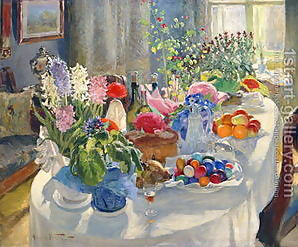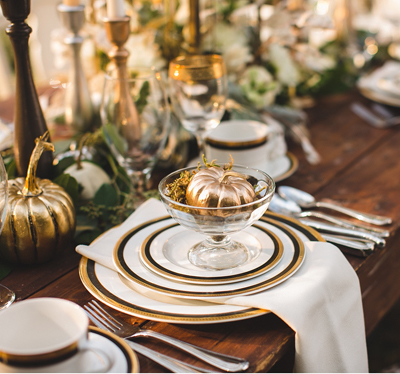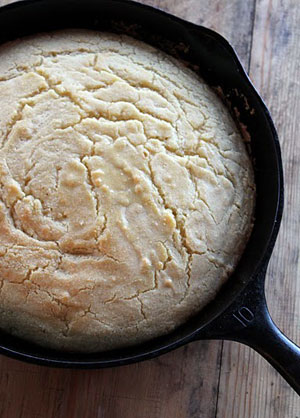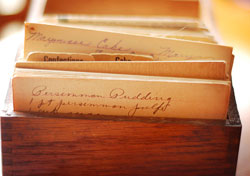 Easter. “Eater” with a full stomach, the inevitable outcome on any
day replete with decorated eggs, chocolate bunnies, ham, lamb, brisket
for the polydenominational and, for the faithful, whatever they have
given up for Lent.
Easter. “Eater” with a full stomach, the inevitable outcome on any
day replete with decorated eggs, chocolate bunnies, ham, lamb, brisket
for the polydenominational and, for the faithful, whatever they have
given up for Lent.
I grew up in a very faithful household—my father was an Episcopal priest and I was devoutly devout, an altar boy from age six and happy for it. The church, near San Diego and which held about 250 souls, was built over a two-year period of volunteer labor by the parishioners, who did everything except the plastering and electrical work. The labor was hard and sweaty, and in honor of all that sweat, my father put an empty beer can in the trench for the foundation. He didn’t put in a full can, he said with a twinkle in his eyes, “because I thought the Good Lord would object to the waste.” The church was an extension of our home, or vice versa—literally (the rectory was about 20 feet away), and figuratively (my mother, father and I folded several hundred palm crosses every year, with enough extra to be saved and burned for use on Ash Wednesday the next year).
When Easter rolled around, my mother boiled up a dozen eggs, which were dipped into various hues, and I hunted for them with gusto. The problem was, one or two hardboiled eggs of any color are enough to eat at one time; they soon are like sawdust in the mouth, and although they quickly grew boring, my parents were Depression-era folks and nothing went to waste.

 I don’t want to sound mean. Because I’m not. That said, I would sometimes ask my dad who this guy was or that guy. It would be a random dude that let’s say was always hanging around Jan Murray or Red Buttons. Sorry I’m not coming up with bigger names, but these were big names in my world. I guess I could say Frank. We’ll get back to Frank.
I don’t want to sound mean. Because I’m not. That said, I would sometimes ask my dad who this guy was or that guy. It would be a random dude that let’s say was always hanging around Jan Murray or Red Buttons. Sorry I’m not coming up with bigger names, but these were big names in my world. I guess I could say Frank. We’ll get back to Frank. In our house, the first smell of Thanksgiving was not turkey roasting or pumpkin pie but the bleach-sweet steam of my mother ironing the good tablecloth. I remember it from a time when I was small enough to creep unnoticed beneath the ironing board while she painstakingly transformed an undistinguished hump of wrinkled linen into a curtain of shimmering white. With a curt flick of her wrist, my mother sprinkled each length with water from a yellow, plastic bottle designed for this purpose, and then the iron would sizzle a path just above my head. Soon I was surrounded by a linen tent. The smell sparkled like hot stars.
In our house, the first smell of Thanksgiving was not turkey roasting or pumpkin pie but the bleach-sweet steam of my mother ironing the good tablecloth. I remember it from a time when I was small enough to creep unnoticed beneath the ironing board while she painstakingly transformed an undistinguished hump of wrinkled linen into a curtain of shimmering white. With a curt flick of her wrist, my mother sprinkled each length with water from a yellow, plastic bottle designed for this purpose, and then the iron would sizzle a path just above my head. Soon I was surrounded by a linen tent. The smell sparkled like hot stars. My Mimi told me something quite hysterically funny and dramatically morbid a few years ago…”If I die before your grandfather, he will have to eat something. I’ve taught him how to make cornbread. That should sustain him in between the three months I die and he remarries.”
My Mimi told me something quite hysterically funny and dramatically morbid a few years ago…”If I die before your grandfather, he will have to eat something. I’ve taught him how to make cornbread. That should sustain him in between the three months I die and he remarries.” It took me half my life to realize that when Guadalupe Contreras
says “Gadaymee”, she means to say, “Goddamn it”. I thought for years
that she had been referring to my sister, whose name is Amy, with a
level of stifled frustration that I found hard to account for. I told a
Spanish-speaking friend about this misunderstanding a while back, and
he in turn informed me that my Spanish pronunciation of “I’m scared”
(tengo miedo) sounds a lot like “I have shit” (tengo mierda). I relayed
this conversation to Lupe. She claimed to disagree.
It took me half my life to realize that when Guadalupe Contreras
says “Gadaymee”, she means to say, “Goddamn it”. I thought for years
that she had been referring to my sister, whose name is Amy, with a
level of stifled frustration that I found hard to account for. I told a
Spanish-speaking friend about this misunderstanding a while back, and
he in turn informed me that my Spanish pronunciation of “I’m scared”
(tengo miedo) sounds a lot like “I have shit” (tengo mierda). I relayed
this conversation to Lupe. She claimed to disagree.